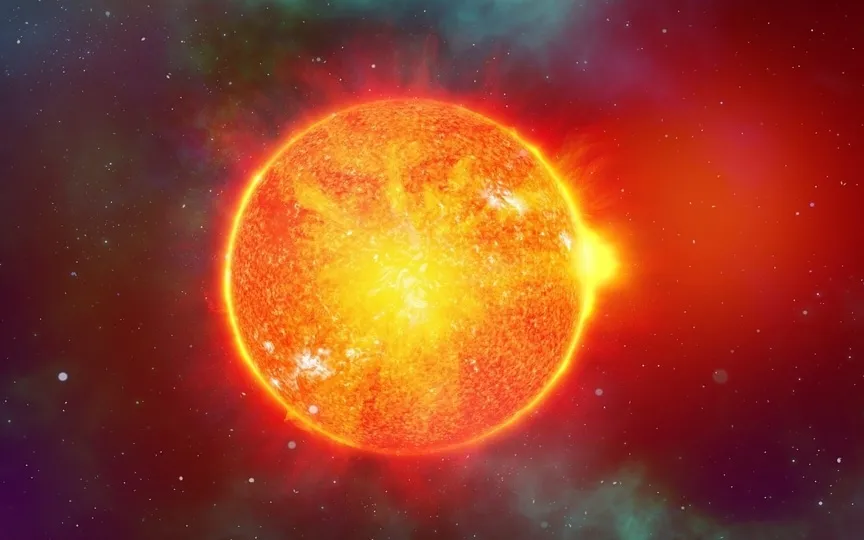Massive X-class solar flare from the Sun causes radio blackouts after solar storm on February 9
Earth continues to face solar storms without any relief. On February 9, the Sun unleashed a powerful X-class solar flare, peaking at 8:10 a.m. (1310 GMT). This resulted in shortwave radio blackouts in parts of South America, Africa, and the Southern Atlantic. The solar flare originated from sunspot AR3576, which had previously shown an M-class flare and plasma eruption on February 5. This recent event is a significant occurrence in solar activity. Fortunately, by February 8, the sunspot had moved away due to the rotation of the sun and Earth, diverting the planet from the direct path of the solar storm.
Coronal mass ejection and solar impact
The solar flare was followed by a coronal mass ejection (CME), characterized by a significant release of plasma and magnetic field from the sun. Heliophysicist Alex Young’s observations showed a clear burst with a coronal wave pointing to a rapid westward of the CME’s trajectory, Space.com reported.
Although the sunspot’s location far to the south makes the CME associated with AR3576 less likely to have a direct impact on Earth, its effects were nevertheless felt. The X-ray caused widespread radio outages due to the powerful pulse of X-rays and extreme ultraviolet radiation, ionizing the upper layers of Earth’s atmosphere and disrupting shortwave radio communications in sunlit areas, including South America, Africa, and the South Atlantic.
Solar flares are caused by the release of magnetic energy in the sun’s atmosphere and are classified according to their intensity and size, with X-class flares being the most powerful. The recent flare was registered as X.3.38, underscoring its remarkable intensity. This increased solar activity coincides with the approaching “solar maximum” phase of the Sun’s 11-year solar cycle.
As scientists closely monitor the sun’s activity, the appearance of giant sunspots and the possibility of new solar flares raise concerns about the functioning of satellites and electronic systems on Earth. Offices such as NOAA’s Space Weather Prediction Center and the World Data Center for the Sunspot Index are working hard to assess these threats and improve space weather forecasting. In addition, NASA’s Heliophysics Systems Observatory continues to study the sun and its effect on the solar system with the goal of improving our understanding of space weather phenomena.
Also read these top stories today:
Meta releases Crackdown! Instagram said in a blog post that it doesn’t “proactively recommend” political content from accounts users don’t already follow.
This article has some interesting details. Check it out here. If you enjoyed reading this article, please share it with your friends and family.
Cybercriminals caught! The malware allowed cybercriminals to secretly connect to people’s computers for malicious purposes. Hackers browsed users’ files, obtained victim’s usernames and passwords, recorded keystrokes, and even watched users through their webcams! Dive here. Was it interesting? Go ahead and share it with everyone you know.
Magic words! Disney is leveraging artificial intelligence with a new advertising tool that helps brands tailor their ads to fit the mood of certain scenes in a movie or TV series. Check out what’s on the cards here. If you enjoyed reading this article, please share it with your friends and family.




